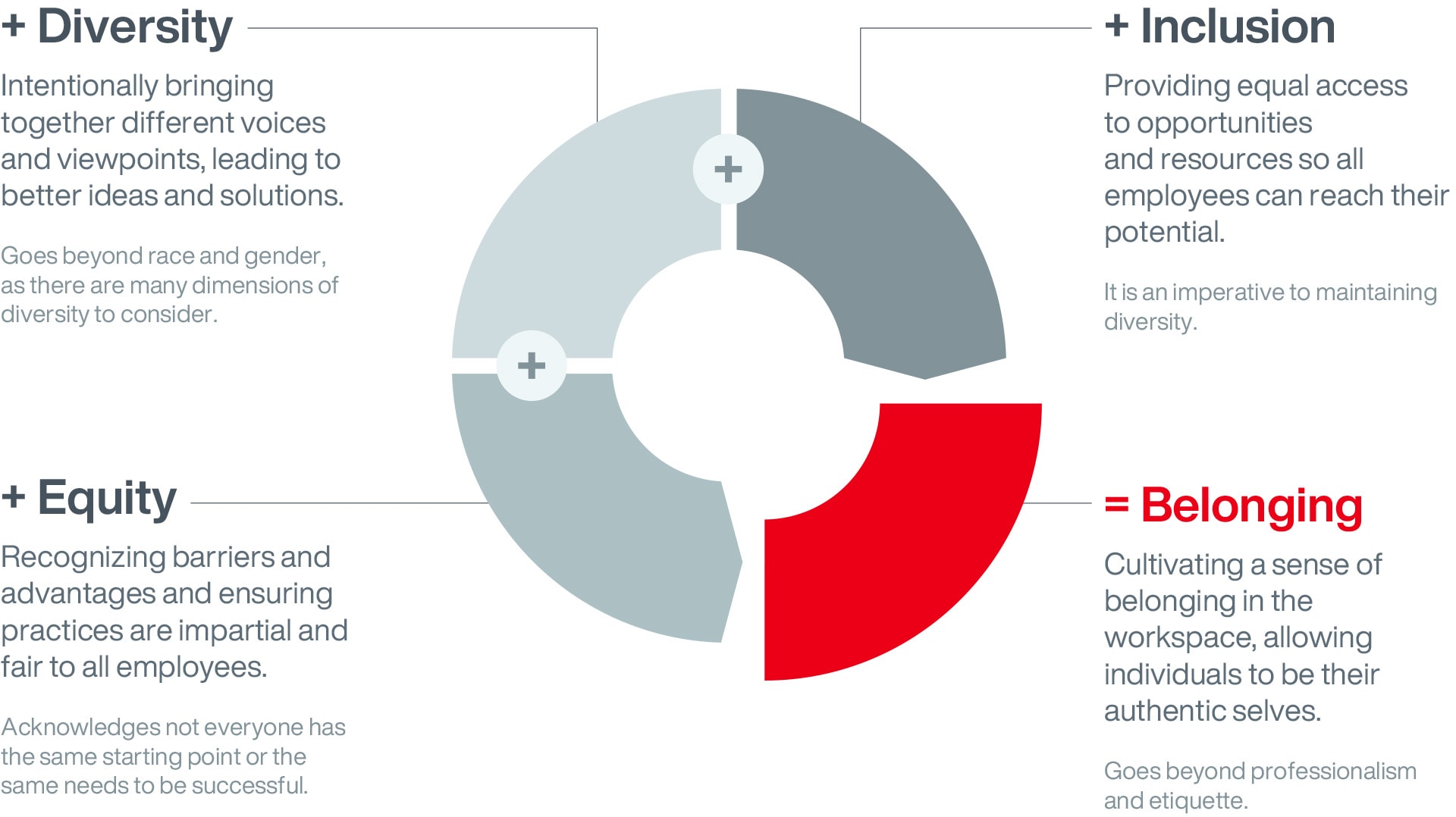Diversity, Equity and Inclusion (DEI)
What is Diversity, Equity and Inclusion?
Diversity, Equity and Inclusion (DEI), alongside newer thinking around ‘Belonging’ are four distinct but related concepts:
- Diversity: Representation of different groups within your organization. It includes all the ways we differ race, gender, age, ethnicity, national origin, religion, sexual orientation and gender identity.
- Equity: Fair treatment of all employees, regardless of their background. It’s about removing barriers and ensuring everyone has access to the same opportunities and has a fair chance to succeed.
- Inclusion: Active engagement of individuals with diverse backgrounds. Employees are more likely to be engaged and motivated when they feel included.
- Belonging: A sense of purpose and meaning in the workplace. A person’s sense of belonging is shaped by their day-to-day experiences and if positive, enable them to feel psychologically safe and bring their full, unique self to work.

How do you Enable Diversity, Equity and Inclusion (and Belonging) in the Workplace?
When it comes to making change happen, what gets measured, gets managed. A successful DEI strategy is driven by data – companies must know what to track and how to gather insights unique to their organisation and wider industry. Aon offers insight into industry-wide global trends allowing you to benchmark your performance and track your progress.
Engaging with employees about the importance of DEI is central to demonstrating your organization’s commitment to embedding DEI through both policies and practices. Creating an environment where everyone feels comfortable talking about their specific perspectives and needs, and able to raise concerns, is fundamental to gathering the insights that underpin your evolving DEI strategy.
With Aon’s DEI consulting services, you can assess your current position compared to the market and your peers and competitors, identifying areas of focus to maximise impact and incorporate new thinking into your DEI benefits design.
We help organizations create the mindset shift to build a business case to buy into DEI . The result is more mature and data-driven strategies that really move the needle in the right direction.
Why Choose Aon for DEI Consulting?
We work in partnership with you to understand the diverse needs of your workforce and how to support your business goals. Our DEI experts work with clients across industries and around the world to help them build more inclusive workplaces.
In a highly competitive market for talent, knowing that you’re able to attract the right people with the right skills is invaluable. Aon’s Human Capital Solutions combines the power of data with expert consulting capabilities. Whether you are a Human Resources professional or responsible for change in your organization, we can provide you with information and advice to empower you to reach your goals and build workforce resilience.


